Entertainment
Are The Oscars History? 9 Ways To Save The Academy Awards
Published
4 years agoon
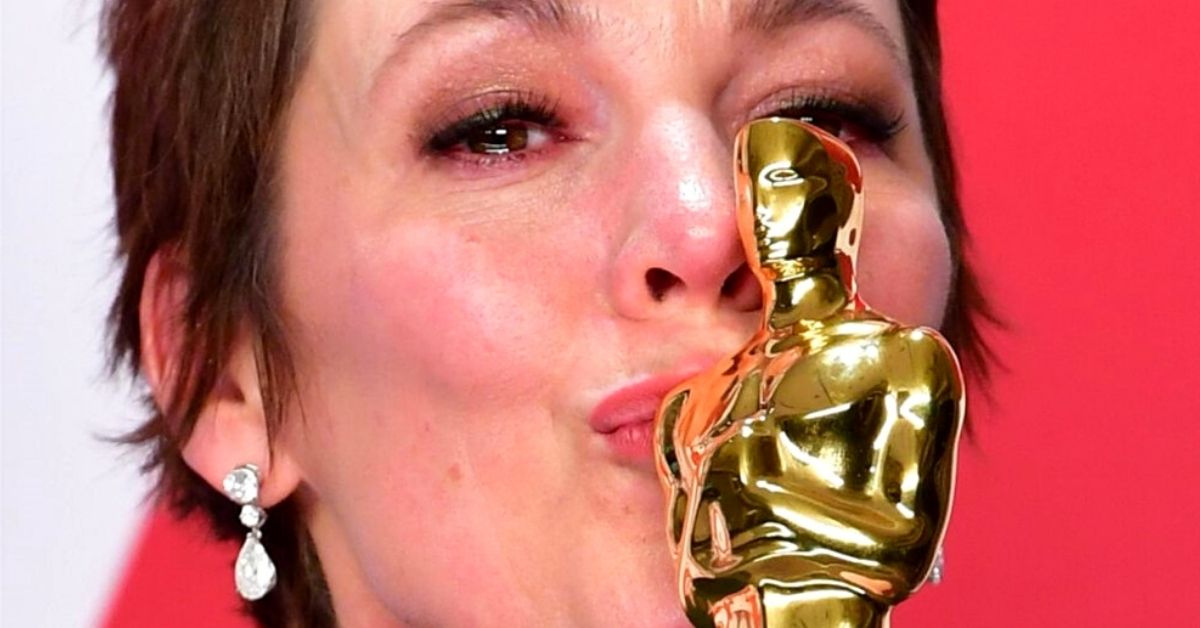
Are the Oscars history?
First of all, probably not. But we may know for sure after Sunday’s Academy Awards. The 93rd show’s ratings were catastrophic, but they awarded films from a year where films were basically not being released.
Still, even before the pandemic, there were several causes for panic. Ratings had been lagging for at least two decades, and people have increasingly come to consider the Academy a dated, out-of-touch institution.
Now that frantic changes are being made to the telecast to bring in more viewers, it’s clear that tensions are higher than ever. Is this a time for reinvention or a sad, quiet end to the first modern awards show? Depends what happens next.
All About Oscar: Where are we now?
The news struck like lightning. Eight awards categories would be taken out of this year’s live broadcast: Editing, Makeup & Hairstyling, Original Score, Production Design, Sound, and the three Short Film categories.
Barring any last-minute changes, these categories will be presented during the red-carpet hour before the show begins, with highlights edited into the broadcast. These changes were met with swift criticism from across the industry, including this year’s nominees.
This isn’t the first time cutting categories have been proposed. Way back in ‘87, producer Samuel Goldwyn suggested moving the Documentary categories to another night. That change was nixed, as was the 2019 decision to give out four awards during commercial breaks.
What’s different this time? Well, ABC reportedly threatened to cancel the show. After last year’s ratings crater, the Disney higher-ups stopped playing around, and now the Academy is going all out to recoup. On top of cut honors, they’re rolling out bizarre slates of presenters and two fan-voted categories: #OscarFanFavorite and #OscarCheerMoment. These act as both a populist engagement with social media and a concession to bitter Spider-Man: No Way Home fans.
So, that’s where we stand. Will these changes be a resounding success? If I may be so bold, probably not. If you want to fix the Oscars, you’ve got to address the show’s issues at the source. It’s not just the telecast that needs to be changed; changes in the Academy’s reputation, the film industry, and society as a whole need to be addressed.
Here are a few humble suggestions.
All the King’s Men: 9 Ways to Fix the Oscars
1) Terms of Endearment: Cater to the fans
Historically, the biggest Oscars ratings haven’t come from newfound interest in the show’s format. The top-rated shows generally have fan-favorite hits like Titanic, Lord of the Rings, and Avatar in competition. You can’t really force that (what with the whole voting thing), but you also can’t expect to smash records without it.
The Oscars remain the most-watched awards show. It varies depending on public interest in TV and film, but there’s a base of people who watch the Oscars, and it’s a pretty big base. If you make big changes to the telecast and you’re not confident in your nominees’ strength to pull in outsiders, you just risk losing both audiences.
If you’re going to make changes, emphasize the things that people watch for. Performances. Clips. Fashion.
Staid tributes to film history have become the show’s bread and butter. While older audiences no doubt appreciate them, they often result in unnecessary filler like 2020’s salute to music in film. Last year’s COVID-era show served as a reminder of film’s power. This year, can we just accept that Oscar viewers already like movies?
Of course, there’s also the biggest reason people watch the awards: the awards. Sure, some viewers will tune out for the less flashy technical categories. But after 94 years, the stakes of the competition are what keeps the show exciting. Even down-ballot wins can be a chance to drum up the stakes, as was attempted in 2011 when Ben Mankiewicz read out betting odds for the winners before the show.
I’m not saying to do that, or to directly encourage viewers to bet, but reminding people of the show’s competitive aspect can please fans and draw a new crowd.
2) The Greatest Show on Earth: Don’t shrink yourself
Time constraints have been an issue for the Oscars ever since they made the leap to TV in 1953. The very next year, William Holden was forced to keep his speech to a brief “Thank you” by network pressure. The 1959 show succeeded in keeping it brief, leaving host Jerry Lewis desperately riffing to fill out the show’s last twenty minutes.
Since then, Oscar ceremonies have gradually gotten longer. Producers going back to the ‘80s have treated “under three hours” as a credo to keep viewers interested. For the record, it’s been just shy of 50 years since the show was actually under three hours.
Here’s the thing: yes, people don’t want to stay up late. But as soon as you concede that your once-a-year gala event is less important than a good night’s sleep, you’ve lost.
What killed ratings for awards shows? Among other things, the Super Bowl. The football championship’s insane ratings have all but taken the awards out of awards season. It’s not that the NFL has broader appeal than movies. It’s that the Super Bowl has successfully marketed itself as an all-day, communal holiday, something for even people with no interest in football or TV to join in on.
How do we put Oscar Sunday on the calendar? First of all, pick a day already. First, it was moved from Monday to Sunday. Then, it was moved up to February, then further up to the week after the Super Bowl, then back to April for the pandemic, and now back up to March. March is fine! Just pick a time and stick to it.
I’m not saying the Oscars need to be as frenetic and ad-stuffed as the Super Bowl to stay afloat, but some variety wouldn’t hurt. Last year’s Steven Soderbergh-produced show had a fast-paced vibe without losing the Oscars’ respected character. It also had trailer drops for new releases, another great source of excitement.
The Academy was founded to… well, bust unions, but also to elevate public perception of the film industry. If they want to court the common folk, they’re more likely to succeed with a dynamic, exciting four-hour show than an austere, masturbatory two-hour one.
3) No Country for Old Men: Embrace social media
When the Oscars were first broadcast in ‘53, everyone made a big stink about the marriage between Hollywood and its “child bride,” television. Purists argued that TV was killing the movies, and that the Oscars hopping on the train was an admission of Hollywood’s defeat.
Needless to say, that’s not how it turned out. But today, some seem equally averse to the Academy getting involved with social media. The new fan-voted categories aren’t without their issues, but social media has been the site of some of the Oscars’ greatest successes in recent memory.
To be fair, AMPAS’ relationship to the social sphere has been… uneasy. On the one hand, 2014’s show was the most-watched in the past decade thanks to viral moments like John Travolta’s “Adele Dazeem” flub and Ellen’s Twitter-breaking selfie. On the other hand, 2015 saw the start of the #OscarsSoWhite hashtag, which caused a huge backlash and eventually made the Academy overhaul its membership.
Still, it’s 2022, and people engage with live events through social media. The Oscars still regularly produce viral trends, but if they fail to lean into it, they could lose out on the whole younger demographic.
For a great example, look at the Cannes Film Festival’s recent deal with TikTok. TikTok users get exclusive behind-the-scenes content and can submit their own creations for the #TikTokShortFilm competition. This move doesn’t just promote Cannes to a younger audience, it legitimizes the creative work that people are making on TikTok.
This isn’t to say that the Oscars should award TikTok shorts, but the example shows that social media outreach doesn’t have to be patronizing. Putting the Oscars on TV elevated the show’s profile and expanded the audience for live television. Putting them on social media can have the same effect.
4) The French Connection: Ride the new waves
America’s independent film movement grew in part out of the Supreme Court’s 1948 Paramount antitrust ruling, which prevented the six major studios from monopolizing distribution and gave indie theaters and studios space to grow. Since then, the Academy, founded and still run by denizens of the studio system, has struggled with how to approach indies.
As Hollywood faltered, a new generation of filmmakers rose who took influence from Europe’s New Wave movements. This movement is called “New Hollywood,” it includes the likes of Brian de Palma, Martin Scorsese, and Robert Altman, and the Academy had no idea what to do with it. These young directors’ idols (Fellini, Bergman, Truffaut, etc.) never got their due from the Academy, which relegated international directors to the “Foreign Language” category.
Faced with a new wave of American film that didn’t respect the Oscars as an institution, the Academy went back and forth. One year, they would give Best Picture to the G-rated Oliver!; the next, the X-rated Midnight Cowboy. These socially-conscious artists forced the Academy to reckon with its own political standings, as when Marlon Brando turned his Godfather win into a protest for Native American justice.
Just as the Academy made an uneasy peace with New Hollywood, they got hit from behind by the blockbuster. Big, formulaic, family-friendly action movies came to dominate the box office. Oscar voters generally agreed that these weren’t usually the best films of the year, but the more they saturated the market, the harder it was to ignore them.
The tension between art films, blockbusters, and the mid-range dramas the Academy loves, has been a constant battle ever since. The Oscars will make occasional concessions to one (a Moonlight win) or the other (a Black Panther nom) before swinging back to the center.
If you ask me, the Oscars should embrace both of these poles a little more than they do now. That’s not to say they should abandon the studio drama, which they’re now solely responsible for. But just as the Academy has opened its heart to international films, they could stand to shine a spotlight on small-budget releases and reward achievements from blockbusters.
People still care about movies. They’re just most likely to care about franchise films, hip indie releases from the likes of Neon and A24, or horror movies. The Academy would seem a lot more relevant if it were paying attention to these kinds of films. A good way to do that would be to move away from the system of targeted ads, gifts, and dirty tricks that currently dominates the process. Level the playing field and give films we don’t think of as “Oscar movies” a fighting chance.
5) Spotlight: Speak up for the little guy
For its first decade or two, the Academy spent most of its time addressing labor disputes. Prior to the New Deal, it was the recognized bargaining body for film industry workers. When unions started to form in Hollywood, they forbade their members from being part of the Academy and boycotted the Oscars.
In fact, one of the first notorious Oscar snubs grew out of this union tension. Bette Davis’ performance in Of Human Bondage was overlooked, and public outrage led to the creation of the write-in ballot system. This snub likely resulted from SAG’s anti-AMPAS policy, which left fewer than 100 actors in the Academy.
After stopping its labor activities, the Academy made peace with the unions, becoming a powerful tool for Hollywood’s labor activists. When AFTRA went on strike in 1967, the Oscars threatened to cancel the whole show if an agreement wasn’t reached (it was).
In the recent past, though, the Academy’s relationship with politics has been more complicated. Their silence during the 1950s red scare proved a marker for where they were headed. Despite charged speeches, viral trends, new strikes, and boycotts, the Academy has almost always kept quiet.
Today, labor disputes once again shake the industry. LGBTQ+ Disney employees are calling out the company, not just for their political activities, but for their erasure of LGBTQ+ content. Animation workers are fighting for equal pay and treatment. IATSE came within an inch of a strike just a few months ago.
How powerful would it be for this year’s Oscars to spotlight the work animation workers do for half the pay of their live-action counterparts? Could a statement of solidarity with Disney’s employees on live TV not make a difference?
Beyond that, the Oscars can level the playing field by promoting indie releases, young filmmakers, and burgeoning movements. Want to improve the film industry’s image? Start with the people who work in it.
6) Crash: Keep ratings in context
To be fair, I don’t know exactly who is freaking out about ratings. ABC’s threats to cancel make them a likely suspect, but we can’t really say to what extent the Academy shares those concerns.
Still, for whoever’s worried about ratings, jumping the gun and making radical changes every time they waver won’t solve anything. If this year’s show is a success, part of it will be because people are going to movies again, but part of it will be because last year’s show was pretty good.
It’s happened before: the 66th show got good reviews, so the next one got a ratings bump, even though people hated it. Social media has made the effects of word-of-mouth more immediate, but viewers’ decision to return is based, at least in part, on how much they liked it last time.
Moreover, you’ve got to pay attention to environmental factors. If a lot of people watch, or nobody watches, it might not have anything to do with the Oscars themselves. In 1998, everyone watched the Oscars because Titanic was nominated. The next year, they capitalized on this with a slew of broadcast changes, and it didn’t work because they couldn’t nominate Titanic again.
The 2003 show was a ratings disaster. The next year, they got a new producer and made a slew of “modernizing” changes, including ads with hit pop songs and backstage access for Oprah. Somehow, they failed to consider that the reason people weren’t watching the Oscars in 2003 was that the Iraq War had started three days ago.
You can’t blame network execs for being cautious, and you can’t blame AMPAS for not wanting to lose their chief source of revenue. But if there’s one thing longtime Oscar viewers are sick of, it’s complete overhauls to the show every year or two. I realize this might be in direct conflict with what I’ve been saying the whole time, but pay attention before you go around changing everything.
7) The Return of the King: Find stability, not nostalgia
In a way, the Oscars couldn’t exist without nostalgia. The aforementioned “beginning of the end” to Old Hollywood came less than 20 years into Oscars history, and the show’s been a vehicle for tributes, reunions, and honorary awards ever since. The same year that Sacheen Littlefeather’s protest was met with boos, Charlie Chaplin won his first and only competitive Oscar on a bizarre technicality.
This year, the Oscars intend to salute the 50th anniversary of The Godfather, the very same film for which Littlefeather took the stage. The Academy’s legacy members love nostalgia plays, and if the Oscars are a show for old people, they might as well milk it, right?
One problem: young people watch the Oscars. Sometimes they watch it the most! I’m sure many of these young Oscar viewers love The Godfather. But the Academy is shooting itself in the foot by angling toward one audience to lose another, potentially bigger one.
There are two periods in Oscars history where the show was arguably not in the perpetual crisis it’s in now. One is the early TV days, between the ‘50s and ‘60s, where the show quietly grew into a pop culture behemoth while the rest of Hollywood shrunk.
This era ended due to a mix of factors. The transition to color, Bob Hope’s departure as host, and the aforementioned rise of New Hollywood and blockbuster filmmaking. By the ‘80s, ratings were in decline, and the Academy was changing producers, hosts, and plans every year, to limited success.
Then, suddenly, something worked. After a particularly bad show in ‘89, AMPAS turned to DGA president Gil Cates to produce. Cates, in turn, brought on a first-time host: Billy Crystal. Reception wasn’t great, ratings were still down, but it was shelf-stable enough that Crystal and Cates were brought back the next year.
Crystal and Cates would go on to lead 6 Oscars shows together and 17 total in the ‘90s and ‘00s. Ratings climbed over time. Crystal’s irreverent, quippy style modernized the show, but the real key to Crystal and Cates’ magic was consistency.
In general, the Oscars perform best when they have a consistent character. A luxury gala hosted by Bob Hope, a variety program hosted by Johnny Carson, a witty parade of stars hosted by Billy Crystal. If viewers know what kind of show they’re about to watch, they’re more likely to watch it again.
The closest thing we’ve had to stability in the past decade was the 89th and 90th shows, both hosted by Jimmy Kimmel and produced by Michael De Luca and Jennifer Todd. ABC loved the synergy of a network host (they previously nixed a Lorne Michaels/Jimmy Fallon show), but after a staggering 19% drop in ratings, Kimmel, De Luca, and Todd were all canned.
Despite relatively positive reception to the past three hostless shows, the Academy has swung back in the other direction. Higher-ups may feel, in the face of bad ratings, that these constant changes are necessary, but I’d argue they’re a big part of why people stopped watching to begin with.
History tells us that the key to long-standing success at the Oscars is stability. Find a tone, find a host (or don’t have hosts), find a producer, and stick to it. The ship’s probably sailed on this, but I’d gladly take another decade of Soderbergh-produced, hostless shows. What the Crystal/Cates era proves, though, is that a middling reception out of the gate isn’t always a sign to abandon ship.
And please don’t bring Kimmel back.
8) It Happened One Night: Be active all year
Since halting all their labor activities in 1947, the Academy has mostly been focused on the Oscars. Other than that, they mostly manage facilities like the Samuel Goldwyn Theater, the Pickford Center for Motion Picture Studies, and the newly-established Academy Museum of Motion Pictures.
This museum is the biggest step yet towards what could keep the Oscars relevant for decades to come: year-round industry engagement.
The key problem with the complaint that the Oscars don’t award blockbusters is that as of now, the Oscars are the only reason Hollywood still makes movies other than blockbusters. 1917, a high-budget war movie from Universal, had earned less than $40 million when it was nominated for Best Picture. It saw a 5,000% boost after it was nominated, and ultimately took home close to $400 million.
It used to be that adult-oriented movies could make money and win Oscars. Then, adult-oriented movies were mostly not making money, but the few that did were being recognized by the Oscars. Now, the only avenue to profit for a mid-budget, adult-oriented drama is to win an Oscar and then make money.
To “fix” the Oscars, we have to work to fix this system. Clearly, the Academy has the power to raise a movie’s profile. If they use that platform to promote films outside of “Oscar season,” they can level the playing field year-round.
This can be done without losing the impact of an Oscar nom. People see Oscar movies to be ready for the show, to be in the loop about the great achievements in film of the past year. If movies that came out in February had a certified shot at an Oscar, if the “merit” of these films was celebrated outside of a two-month window, it could change everything.
9) Parasite: Break up with Disney
When talking about the mounting pressure on the Oscars coming from all sides, there’s an elephant in the room. Or something else with a distinctive set of ears.
ABC is owned by Disney. They bought out the network in 1995, right around the time that more stories of network intervention affecting the show came out. In ‘04, they implemented a tape delay, giving them authority to censor the live broadcast. In ‘05, they forced Robin Williams to cut a raunchy number in protest of homophobic anti-SpongeBob protests. (What a sentence!) Williams appeared with tape over his mouth in protest.
Incidentally, Disney also ratcheted up their Oscar campaigns around this time. After scoring a Best Picture nom for Beauty and the Beast, they started a major push for their animated films. They also bought out Miramax, the indie distributor behind Paris Is Burning, Cinema Paradiso, and Reservoir Dogs. The first Oscars under Disney management happened to coincide with Disney taking home their first-ever Best Picture win, for Miramax’s The English Patient.
Today, Disney has the exclusive rights to air the Oscars, at least through 2028. The fee Disney pays to screen the show is the Academy’s primary source of revenue.
Disney also has a vested interest in winning Oscars. After nearly a century of being sidelined as children’s entertainment, they’ve built a working model for winning awards, and they’ve shown an interest in dominating. When they threaten to cancel the Oscars unless their demands are met, it presents an obvious conflict.
In 2019, when four categories were nearly cut, all four of them (Editing, Makeup & Hairstyling, Cinematography, Live Action Short) happened to be categories in which Disney wasn’t nominated. Other technical categories such as Visual Effects, Costume Design, and Production Design, all of which nominated Black Panther, were untouched.
Not only does Disney make movies; they’re synonymous with the kind of movies that are killing the Oscars. The Marvel Cinematic Universe has sent the blockbuster model into overdrive. In today’s IP-driven market, creativity is an afterthought at best and a liability at worst.
It’s similar to the “counter-programming” model that ABC applied in its early days. They looked for time slots where CBS and NBC offered lower-rated, educational programming and stuffed them with crowd-pleasing Westerns and crime shows. Eventually, networks had no choice but to play along, resulting in the death of the “Golden Age of Television.”
The big film studios loved ABC’s model, signing deals to make content that helped push ABC to the top. It’s precisely because of their cozy relationship with Hollywood that ABC became the home of the Oscars. But now that this ruthless, anti-competitive model has come to Hollywood, who will speak for them?
Disney owns the Oscars, and they’re becoming more aggressive each year. Disney owns films that compete for Oscars, and their Fox buyout gave them an even bigger piece of the pie. Disney owns films that suffocate the Oscars, and they can sic their legions of fans when the Oscars fails to recognize them.
All this is to say, the Academy and Disney have a toxic relationship. Disney owning the show isn’t just bad for the show, but for the industry as a whole. Now that the Paramount antitrust ruling has been overturned and streaming services like Netflix are replicating Old Hollywood models, things are going to get worse.
Come 2028 (if the show can last that long), the choice is clear: the Oscars have to dump Disney. Ideally, whichever partner they pick should allow for accessible streaming. They should also really pick a partner that doesn’t produce movies themselves, but failing that, at least pick one with a little more respect for filmmaking.
From Here to Eternity: Conclusion
The Oscars have seen better days, but not all is lost. The problems that led us here go way beyond getting the show under three hours. The film landscape has changed, the public’s relationship with film has changed, and the industry’s relationship with the Academy has changed.
Somehow, despite all this, the Oscars still carry prestige. Winning an award gives actors, creatives, and films more prestige. It can turn a small, adult drama into a hit, in an age where practically nothing else can. Ratings are dire, reputations have never been worse, but there’s a kernel of public faith in the Oscar itself that keeps people coming back, more so than any other awards show.
I’ve outlined a few ways to make the most out of that faith. Uplift great films throughout the year. Be a voice for change. Go bigger, not smaller. Embrace new frontiers like streaming and social media. But most importantly, remember who’s kept the Oscars relevant for nearly 100 years: people who love movies.
You may like
Entertainment
FN Meka, the world’s first AI rapper, gets booted out by record label
Published
4 months agoon
August 29, 2025By
Carmen Day
Unfortunately, we’ve reached a point where companies use AI to create artist identities. For example, at the 2022 VMAs, Eminem and Snoop Dogg performed with their avatars in the metaverse. And AI rappers are no different. The first AI-generated rapper was FN Meka, who burst onto the scene in April 2019.
Soon enough, he gained a huge following on Tiktok for his Hypebeast aesthetic and larger-than-life personality. In 2021, his Tiktok ballooned to 10 million followers. His popularity prompted Capital Records to sign him on August 14 this year. But, internet users began pulling up records of his questionable online behavior. Ten days later, his label booted him out.
Here’s how it happened.
Apparently, AI rappers exist.
FN Meka’s concept isn’t a true original. In fact, when it comes to virtual rap avatars, you’d probably think of British rap group Gorillaz first.
Brandon Le created the AI rapper avatar to sell non-fungible tokens. However, executive Anthony Martini led the avatar to new heights. Martini signed the rapper to Factory New, a record label he made for virtual artists.
His first single, “Florida Water,” features Gunna and Cody “Cix” Conrod, a Fortnite player. On the day FN Meka signed the deal, the single was released.
The rapper is the first artist to sign in Factory New.
The downfall
A few days after his new record deal, Industry Blackout, an online activist group, called out FN Meka over his questionable actions.
For one, the AI rapper had used the N-word in several of his songs, including his first single. He also mocked police brutality and posted a picture of himself being beaten up by the police.
Plus, FN Meka was criticized for racially stereotyping Black people because of his appearance and aesthetic. Furthermore, rumors began circulating that no actual Black people were involved in his creation in the first place.
Other news outlets also criticized the AI rapper for collaborating with Gunna, who is in jail for racketeering.
The record company has since dropped him. In a statement, the record label offered “their deepest apologies to the Black community.” Because of FN Meka’s actions, the label has cut ties with him “effective immediately.”
More and more problems
It doesn’t end there.
Kyle the Hooligan has come forward as the voice behind FN Meka. And the rapper has dropped new information on the issue. He alleges that the company did not pay him for the first three songs he made for the AI rapper. He also claims to have been ghosted by the creators at around 2021, when FN Meka just started gaining traction.
Of course, this comes as a surprise. Factory New claims that the AI writes the song while the humans only perform it.
Kyle doesn’t know who currently voices FN Meka, and he hasn’t probed it. What we know for sure, though, is that the rapper is based on other trendy rappers like Ice Narco, Lil Pump, and 6ix9ine.
On August 28, Kyle the Hooligan announced that he would file a lawsuit against Brandon Le and Factory New.
There’s a sort of irony in FN Meka. The AI rapper, voiced by a Black artist, is the product of white creators. And some activists and critics even call the AI rapper a new form of blackface. Here, critics argue that anyone can use and adopt Blackness without being Black. Today, a majority of FN Meka’s music and videos have been deleted from TikTok. Martini has also walked away from Factory New and FN Meka, leaving the rapper’s fate hanging in the air.
Entertainment
History of the NBA: The Success Behind the Big League
Published
5 months agoon
July 10, 2025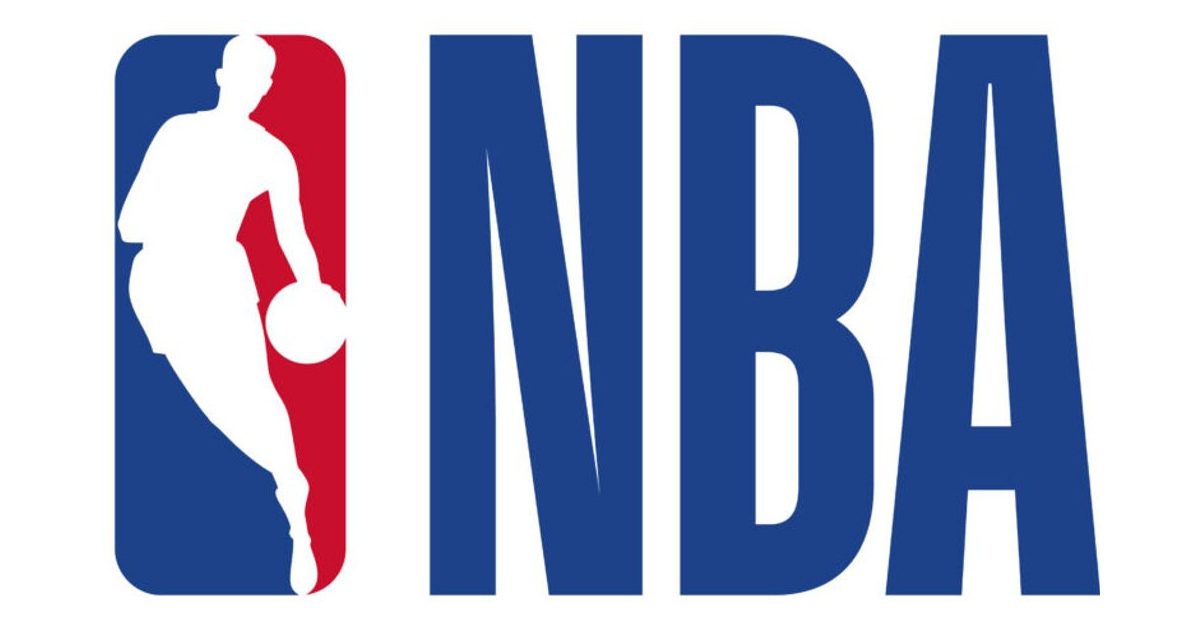
A household name known across the globe, the NBA (National Basketball Association) needs no introduction. Everyone is familiar with the logo, the commercials, the players, and the teams. This is all thanks to its establishment in 1946, which has grown into a lucrative and prosperous business, loved by many basketball fanatics. But how exactly did the NBA achieve this global success? Find out here.
History of the NBA: How it Started
Deemed the most significant professional sports league in the U.S. and Canada, the NBA is a favorite basketball league among most men worldwide. It’s a professional basketball league in North America, with 29 teams in the United States and one team in Canada. Overall, the NBA has 30 of the best basketball teams with the best talent in the world.
The NBA was founded on June 6, 1946, in New York City, with Maurice Podoloff as its first president and commissioner. Its original name was the BAA, which stands for Basketball Association of America. It then merged with its competitor, which is another basketball league called the National Basketball League (NBL). And this is when the league changed its name to the National Basketball Association (NBA).
The NBA’s basketball season runs from October to April, with the playoffs extending into June. Each of the 30 teams plays 82 regular-season games, and the league now includes a midseason tournament called the NBA Cup, held in November and December, which adds competitive flair to the early calendar.
As of 2025, NBA players remain among the highest-paid athletes in the world based on average annual salary. For example, Stephen Curry leads the league with a salary of $59.6 million, followed closely by stars such as Joel Embiid, Nikola Jokić, and Kevin Durant, all of whom earn over $50 million per season. The league’s growing media deals and global reach continue to drive player earnings upward.
These are the NBA teams of the 2024–25 Season:
- Atlanta Hawks
- Boston Celtics
- Brooklyn Nets
- Charlotte Hornets
- Chicago Bulls
- Cleveland Cavaliers
- Dallas Mavericks
- Denver Nuggets
- Detroit Pistons
- Golden State Warriors
- Houston Rockets
- Indiana Pacers
- Los Angeles Clippers
- Los Angeles Lakers
- Memphis Grizzlies
- Miami Heat
- Milwaukee Bucks
- Minnesota Timberwolves
- New Orleans Pelicans
- New York Knicks
- Oklahoma City Thunder
- Orlando Magic
- Philadelphia 76ers
- Phoenix Suns
- Portland Trail Blazers
- Sacramento Kings
- San Antonio Spurs
- Toronto Raptors
- Utah Jazz
- Washington Wizards
The Reason for the NBA’s Success
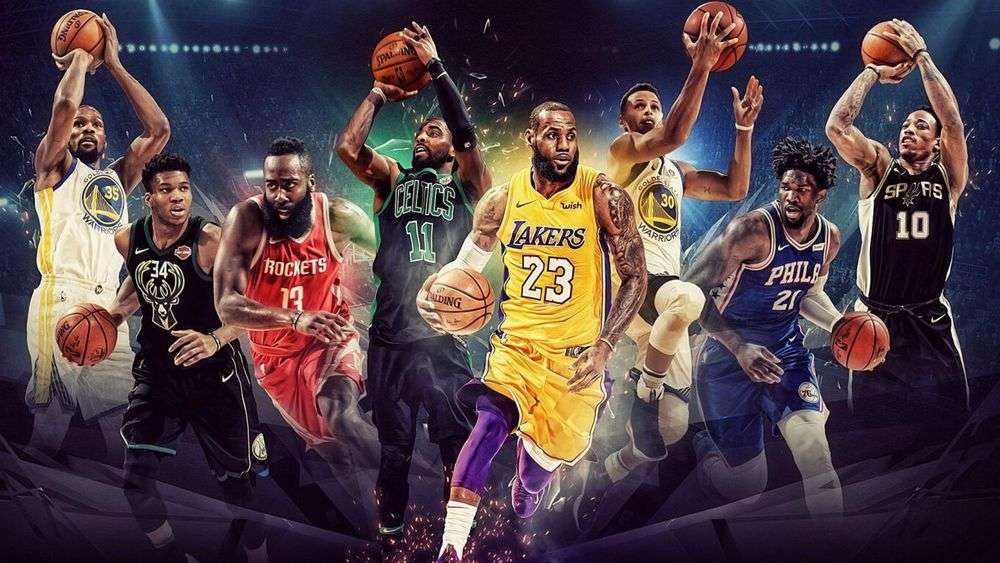
The NBA is the most successful sports league globally, amassing billions in revenue. And this is due to how innovative this professional basketball league is. For decades, it had to catch up to its competing sports leagues, such as football and baseball.
Moreover, the NBA is also the first league to transform its all-star game into a three-day weekend packed with fun events with impressive turnouts. The NBA is also responsible for turning NBA players into global stars due to worldwide broadcasting. The NBA dominated the other top sports league in America, Major League Baseball.
Since it’s not a public company, the league doesn’t disclose detailed public financial reports. But one Forbes report that shows valuations of all 30 NBA teams, the league’s revenue in the 2018 to 2019 season reached around $8.6 billion.
Each one of the teams is valued at $1 billion, and one team, on average, is worth $2.2 billion. This is about 14 percent higher than the 2017 to 2018 season.
It’s no surprise that NBA players are the best-paid athletes in the world. Plus, it certainly also doesn’t shock everyone why the NBA’s revenue could reach up to billions. And that’s because the league amasses its revenue from several streams.
Revenue from TV
While many would like to see the action live on a court, many people also prefer to watch games on TV. And this is why the NBA’s television revenue is a major part of its success. The league has garnered several television contracts that continue to increase over the years.
During the 2016 to 2017 season, ESPN and TNT had to re-up their contracts to approximately $24 billion. It was a nine-year deal that earned the NBA around $2.6 billion per year.
The NBA also had to ramp up TV advertisements, which is also one of the reasons why the league gained popularity over time.
Revenue from merch
Another significant contributor to NBA’s revenue is merchandise, which accounts for around $1 billion annually. During the 2017 to 2018 season, the teams wore advertisements on their jerseys for the first time in the history of NBA. This is called the Jersey Patch revenue, which lets teams take home $9.3 million annually.
Another revenue from merch is sponsorships. The NBA also gets sponsorship from major brands like Nike and Adidas, with contracts amounting to billions.
Revenue from tickets
The ticket sales aren’t the NBA’s primary source of revenue. However, it still stacks up to incredible sales every season. For instance, tickets are sold at around $70 each. Multiply that by 15,000 to 20,000 attendees. You do the math.
Worst draft in the history of NBA

According to experts, the worst draft in the history of the NBA was the 2000 NBA draft on June 28, 2000. It was the only draft in which a college senior was considered the top overall selection.
The only top pic was Kenyon Martin, first-rounder Jamaal Magloire, and second-rounder Michael Redd.
Most high-performing teams
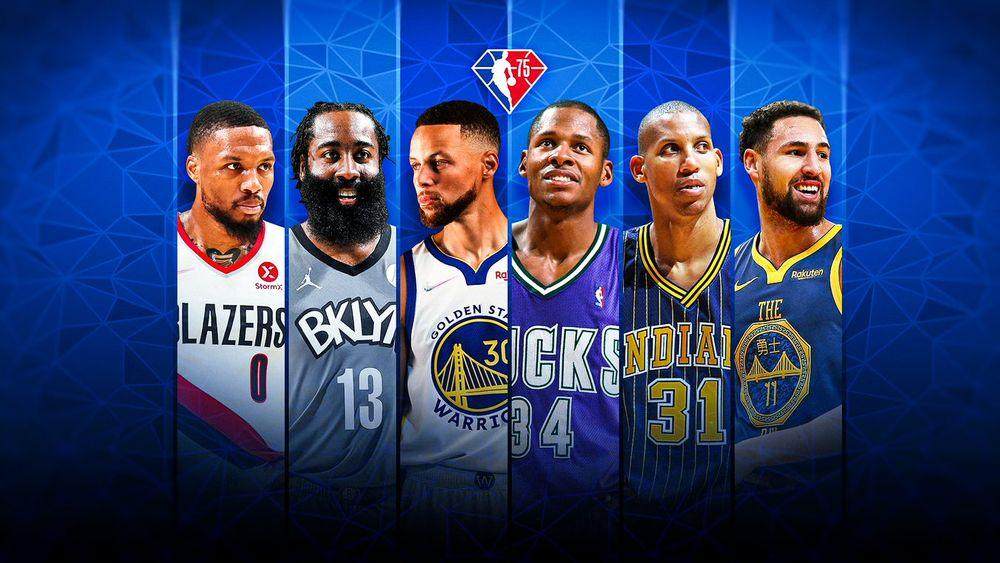
The top NBA players have been gaining stardom globally, with fanatics giving their full support in every game. These NBA legends list continues to grow, with names in each new generation.
Some of the greatest NBA players of all time (2025 edition)
- Michael Jordan
- LeBron James
- Kareem Abdul-Jabbar
- Bill Russell
- Magic Johnson
- Wilt Chamberlain
- Larry Bird
- Kobe Bryant
- Tim Duncan
- Shaquille O’Neal
- Hakeem Olajuwon
- Oscar Robertson
- Kevin Durant
- Stephen Curry
- Dirk Nowitzki
- Charles Barkley
- Karl Malone
- John Stockton
- David Robinson
- Julius Erving
- Elgin Baylor
- Steve Nash
- Allen Iverson
- Kevin Garnett
- Rick Barry
- John Havlicek
Modern legends rising into historical greatness
- Giannis Antetokounmpo
- Nikola Jokic
- Shai Gilgeous-Alexander
- Jayson Tatum
- Luka Doncic
- Victor Wembanyama
It’s still tricky to crown a single “best” team in NBA history—success can be measured by championships, consistency, or win-loss records. But here’s how things stand now:
- Boston Celtics remain the winningest franchise in NBA history, with 3,574 total wins.
- San Antonio Spurs still hold the highest all-time win percentage over the past 25 years, winning 62.5% of their games.
- Minnesota Timberwolves continue to rank among the lowest in win percentage, with a historical record of 1,088 wins to 1,581 losses, translating to a 40.8% win rate.
For current standings and team performance, you can visit the NBA’s official standings page.
Conclusion
The sports league juggernaut isn’t slowing down anytime soon. As long as basketball fans are still raving about their favorite teams and players, it’s no surprise this basketball league will enjoy revenue increases in the coming years.
For other stories, read more here at Owner’s Mag!
Entertainment
Taylor Swift’s Fortune: The Billionaire Behind The Eras Tour
Published
6 months agoon
June 17, 2025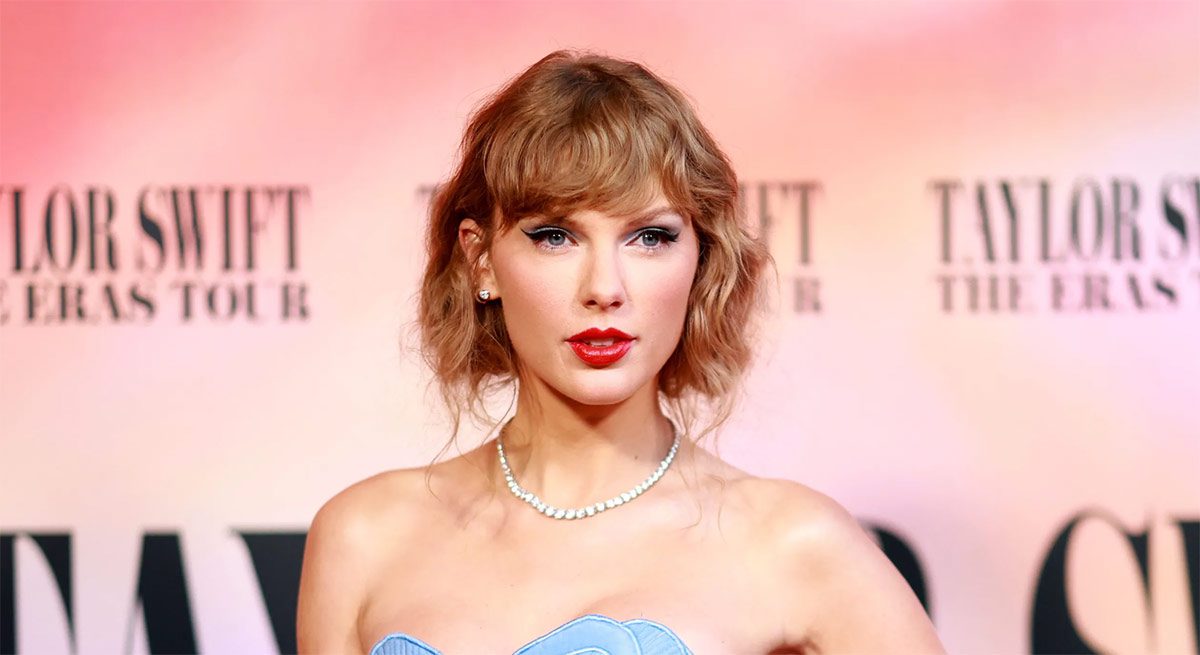
Taylor Swift’s journey in music has been nothing but extraordinary, phenomenal, even. From a young country music singer-songwriter to a global pop culture icon, she has consistently pushed the boundaries of what it means to be a successful artist. With a $1.6 billion real-time net worth as of this writing, her fortune is built not only on her musical talent but also from her savvy business acumen and deep connection with her fans.
Taylor Swift’s Rise to Stardom
First making a name in the world of country music, Taylor Swift began her musical journey as a teenage prodigy. She signed with Big Machine Records at the age of 14, and by 2006, she had released her self-titled album.
This gained her much-needed attention, thanks to the incredible mix of catchy melodies, heartfelt lyrics, and a distinct country-pop sound. A few tracks (Tim McGraw and Teardrops on My Guitar) became instant hits and anthems for her young listeners. Swift’s amazing ability to capture the complexities of adolescence resonated loudly with fans and, with much authenticity, built her a loyal following.
The release of her 2014 album, 1989, showcased Swift’s exploration of a broader musical territory. Her transition from country to pop was met with critical and commercial success, paving the way for a larger global audience and expanding her reach beyond country music. This album cemented her position as a mainstream pop icon.
Since then, Swift has garnered recognition, including 12 Grammy Awards, while solidifying her status as a cultural icon.
The Business of Taylor Swift
Another significant component of Taylor Swift’s success comes from her keen business acumen. Early in her career, she made one of her most strategic moves: securing the ownership of her songwriting rights. Her deal with Big Machine Records resulted in the label owning the rights to her first six albums.
To gain control over her creative work, Swift rerecorded and rereleased her music, calling them Taylor’s Versions. This was met with immense commercial success while raising awareness about the challenges artists face in the music industry. This positioned her as a voice for change and a powerful advocate for fellow musicians.
The business savvy didn’t end with Taylor Swift’s music. Endorsements, investments, and partnerships also added to her wealth. Then there’s the merchandising empire, which is a huge part of Taylor Swift’s financial success. Swifties, as her fans call themselves, are fiercely loyal and would buy exclusive merch tied to Swift’s albums, tours, and personal branding.
The Financial Impact of “The Eras Tour”
And the buck doesn’t stop there. The Eras Tour has been a game-changer for Taylor Swift. It set new records and reshaped the live music industry. It became one of the highest-grossing in history, with some estimates at over a billion dollars in revenue. While it showcases her universal appeal, it also boosted economies in cities around the world.
Each of Swift’s performances became a celebration of her musical journey. They were replete with stunning stage designs, elaborate setlists, and personal storytelling, creating an immersive experience that gave the show a once-in-a-lifetime feel.
The influx of Swifties impacted host cities economically. Local businesses such as hotels, restaurants, and transportation benefited greatly from the tour.
Taylor Swift: The Savvy Businesswoman
Carefully managing her brand and image led Taylor Swift to success beyond her music. She evolved with her audience but remained true to her values. Controlling her narrative, she has crafted a relatable yet aspirational persona that resonates well with millions.
Additionally, Swift has aligned her brand with various social causes, reinforcing her image as a musician and entrepreneur who uses her success to make a positive impact. She does this by using her platform to speak out on issues such as LGBTQ+ rights, women’s empowerment, political activism, and overall encouraging change.
The Road to a Billion
Taylor Swift’s road to billionaire status is a result of her diverse income streams. We now know her wealth comes from music royalties, specifically The Eras Tour, merchandise sales, and smart investments. She further strengthened her financial portfolio by investing in real estate, tech companies, and her own production company.
When you compare her to other artists who have reached billionaire status, such as Rihanna and Jay-Z, you’ll see that her success is distinguished by her complete control over her music and brand. While others entered other industries like fashion and beauty, Swift focused on her music, tours, and merchandise, creating a self-sustaining financial empire.
The Cultural Phenomenon
There is no doubt, Taylor Swift is a cultural phenomenon, and this is thanks to her enduring connection with her fanbase, the Swifties. She has built a solid relationship with them through genuine interactions, storytelling, and a sense of community. She has shown an openness in social media that, alongside her relatable lyrics, connected her with fans on a deeper and more personal level.
Taylor Swift has indeed shaped pop culture and the entertainment industry by setting trends, challenging norms, and advocating for causes she believes in. From fashion trends to how artists navigate their careers, Swift has made her impact. Most importantly, her authenticity has set her apart.
She has displayed the ability to evolve musically while maintaining her values, earning her the loyalty of her diverse following. Her lyrics are deeply personal, touching on various subjects like love, heartbreak, and self-discovery, echoing the sentiments of her listeners on a universal level.
Final Thoughts
From a country music star to a global icon, Taylor Swift has to thank her unparalleled talent, strategic thinking, and deep connection to her fans. Her savvy business moves, groundbreaking tours, and authenticity have helped her amass a fortune while transforming her into a cultural phenomenon.
21 bit casino bonuscode

Top 10 Video Marketing Agencies You Must Check Out in 2026
Casino mobile apps

The Top 8 Webinar Platforms For Your Next Virtual Event or Demo
Hash casino
Bizzo casino deposit bonus
Geheime casino tricks de erfahrung

Top 10 Presentation Software To Use in 2026

Top 10 Video Marketing Agencies You Must Check Out in 2026

Top 10 Social Media Scheduler Apps to Automate Your Postings

How Marketing Optimization Tools Level Up Your Marketing Game

The Top 8 Webinar Platforms For Your Next Virtual Event or Demo

What’s the Best Unlimited Graphic Design Subscription Platform?

What’s the Best Graphic Design Service for Long-Term Projects
Trending
- Business2 days ago
Top 10 Video Marketing Agencies You Must Check Out in 2026
- Technology3 days ago
The Top 8 Webinar Platforms For Your Next Virtual Event or Demo
- cresuscasino5 days ago
Cadoola casino review
- Business4 days ago
What’s the Best Design Agency in Chicago
- azurcasino5 days ago
888 casino willkommensbonus
- Business4 days ago
What’s the Best Graphic Design Service for Ongoing Marketing?
- leonbetcasino4 days ago
Doubledown casino free chips bonus collector
- cresuscasino4 days ago
Casino chateaufarine
- Business3 days ago
What’s the Best Design Agency in Los Angeles?
- leonbetcasino4 days ago
Essence geant casino annemasse








